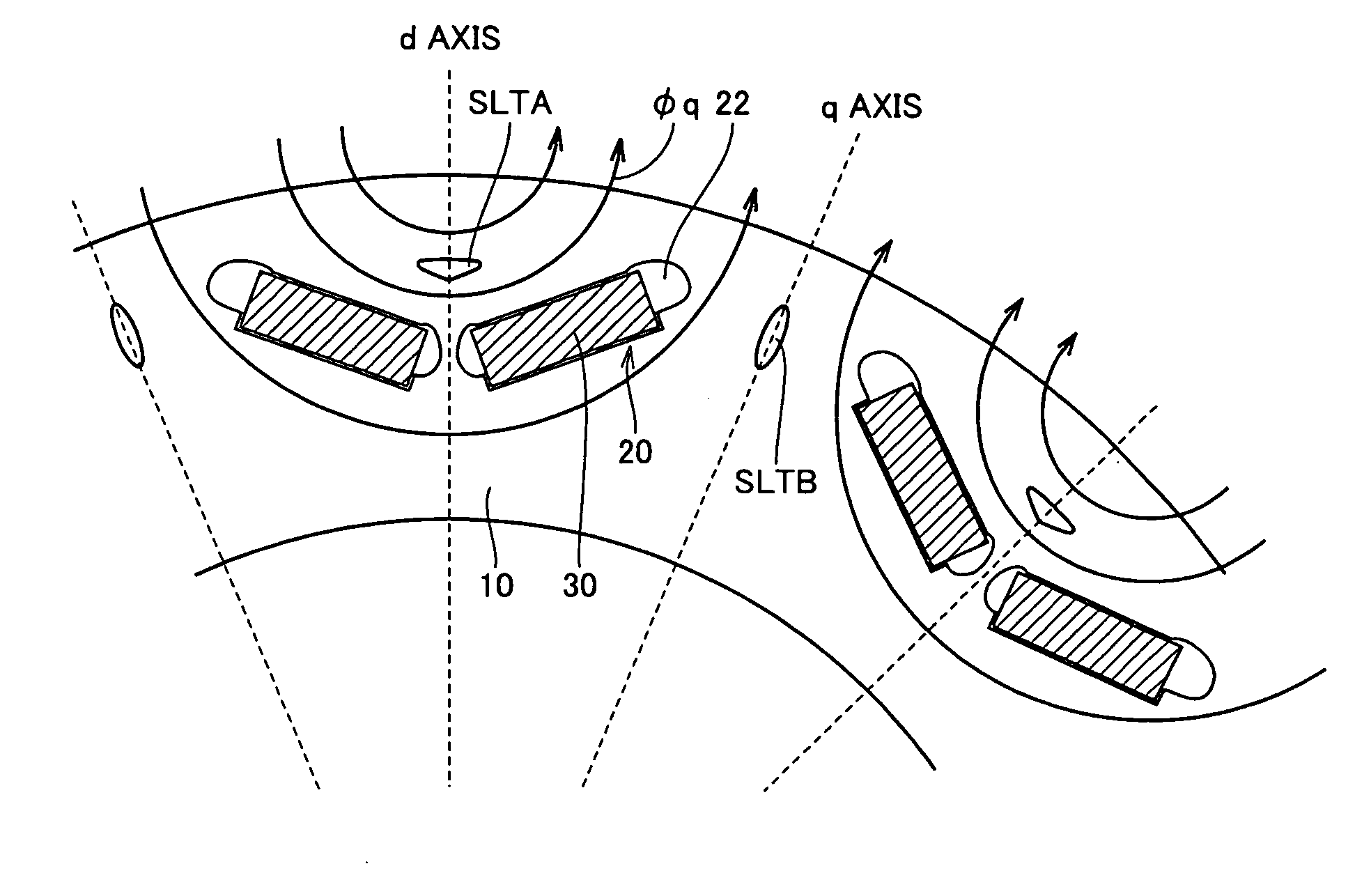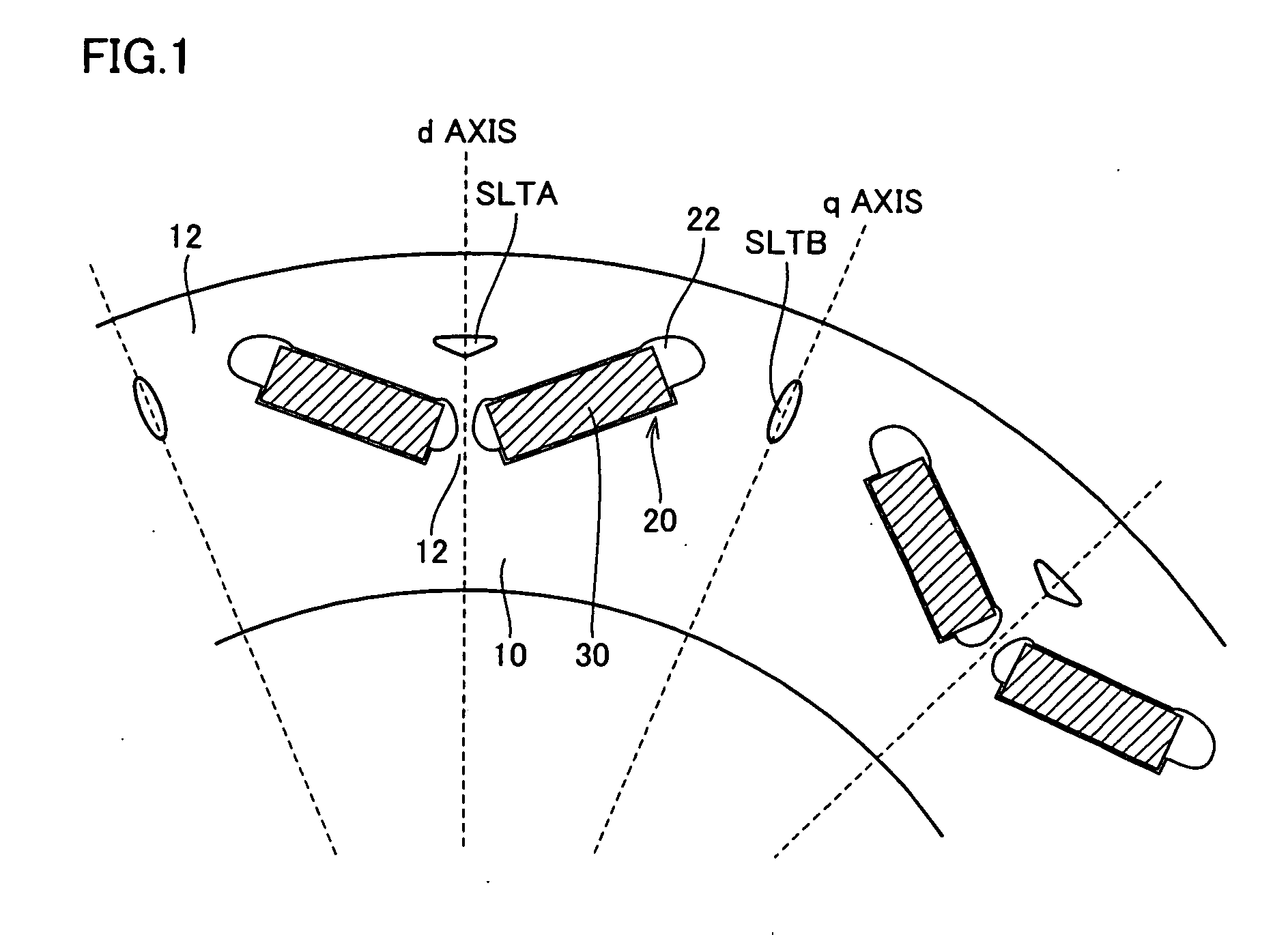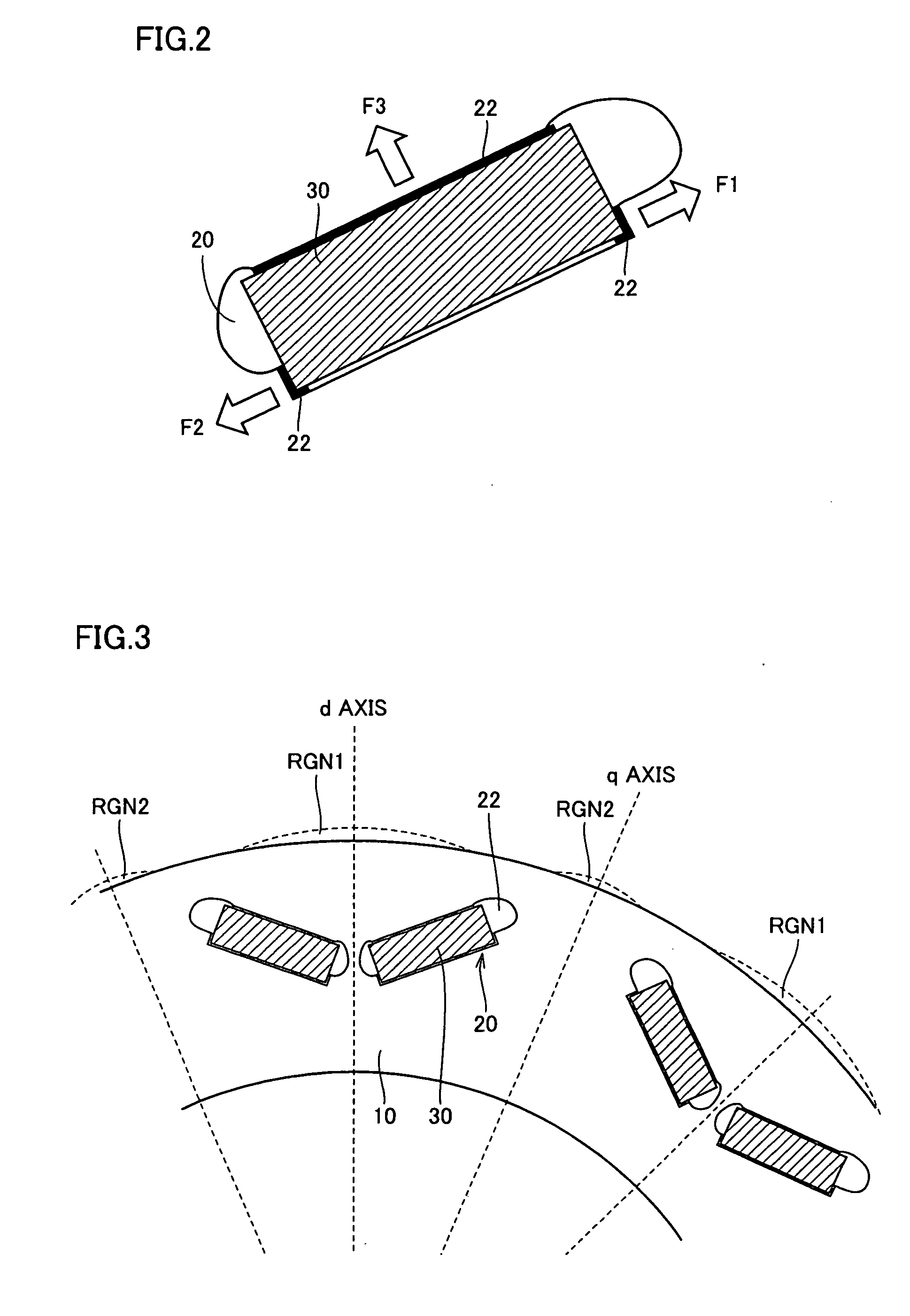Permanent magnet type rotating electric machine capable of suppressing deformation of rotor core
a permanent magnet and electric machine technology, applied in the direction of dynamo-electric machines, electrical apparatus, magnetic circuits, etc., can solve the problems of permanent magnet damage, permanent magnet b> may wobble, etc., and achieve the effect of suppressing the deformation of the rotor cor
- Summary
- Abstract
- Description
- Claims
- Application Information
AI Technical Summary
Benefits of technology
Problems solved by technology
Method used
Image
Examples
first embodiment
[0046] First Embodiment
[0047]FIG. 1 is an illustration for describing a structure of a rotor in a permanent magnet type rotating electric machine according to a first embodiment of the present invention. FIG. 1 is an enlarged view of the rotor when seen from the rotation shaft direction.
[0048] Referring to FIG. 1, the rotor includes a rotor core 10 provided at the outer periphery of a not-shown rotation shaft, and permanent magnets 30 arranged at rotor core 10.
[0049] Rotor core 10 is, for example, formed by a plurality of electromagnetic steel plates stacked in the rotation shaft direction of the rotor. Openings 20 are provided in a plurality of numbers along the circumferential direction of rotor core 10. When punching electromagnetic steel plates to obtain thin plates forming rotor core 10, openings 20 are punched simultaneously, and formed in parallel with the rotation shaft as the thin plates are stacked.
[0050] As shown in FIG. 1, openings 20 are arranged at the outer periphe...
first modification
[0082] First Modification
[0083]FIG. 6 is an illustration for describing a structure of a rotor in a permanent magnet type rotating electric machine according to a first modification of the first embodiment of the present invention.
[0084] Referring to FIG. 6, a rotor core 10acorresponds to rotor core 10 in FIG. 1 of which slit SLTB is replaced by a slit SLTC. Slit SLTC is similar to slit SLTB in FIG. 1 in that it is arranged on the q axis, but different in that it is arranged on the inner circumferential side of rotor core l0a.
[0085] While slit SLTC has the function of absorbing stress F1 and stress F2 similarly to slit SLTB, it's shape is greater than that of slit SLTB. This is enabled by the arrangement of slit SLTC on the inner circumferential side of rotor core 10a, which allows the shape of slit SLTC to be set not being limited by the magnetic path of the magnetic flux by the stator. That is, according to the present modification, the degree of freedom in designing the slit ca...
second modification
[0086] Second Modification
[0087]FIG. 7 is an illustration for describing a structure of a rotor in a permanent magnet type rotating electric machine according to a second modification of the first embodiment of the present invention.
[0088] Referring to FIG. 7, a single opening 20 is arranged for each magnetic pole in a rotor core 10b. That is, the rotor according to the present modification is different from the rotor shown in FIG. 1, in which the magnetic pole is formed by a pair of permanent magnets 30 arranged in a V-shape, in that the magnetic pole is formed of a single permanent magnet arranged as inserted into single opening 20.
[0089] In such a configuration of the rotor, in order to absorb stress acting on rotor core 10b, a slit SLTD is provided. Specifically, as shown in FIG. 6, slit SLTD is provided at the center of the magnetic pole and on the outer circumferential side of rotor core 10b.
[0090] While slit SLTD has the function of absorbing stress F3 similarly to slit SL...
PUM
 Login to View More
Login to View More Abstract
Description
Claims
Application Information
 Login to View More
Login to View More - R&D
- Intellectual Property
- Life Sciences
- Materials
- Tech Scout
- Unparalleled Data Quality
- Higher Quality Content
- 60% Fewer Hallucinations
Browse by: Latest US Patents, China's latest patents, Technical Efficacy Thesaurus, Application Domain, Technology Topic, Popular Technical Reports.
© 2025 PatSnap. All rights reserved.Legal|Privacy policy|Modern Slavery Act Transparency Statement|Sitemap|About US| Contact US: help@patsnap.com



